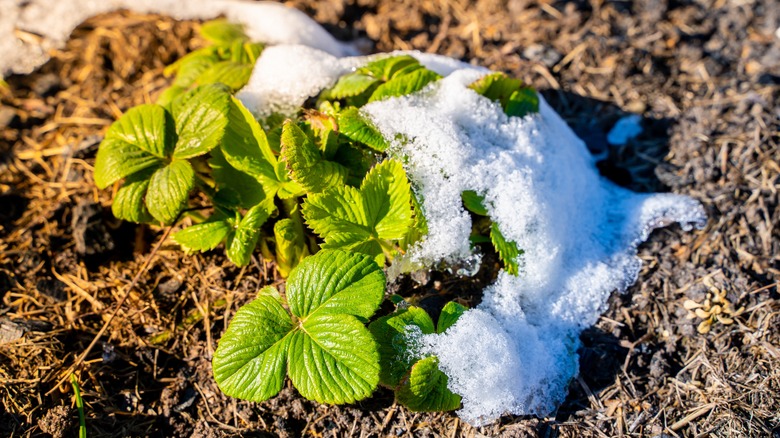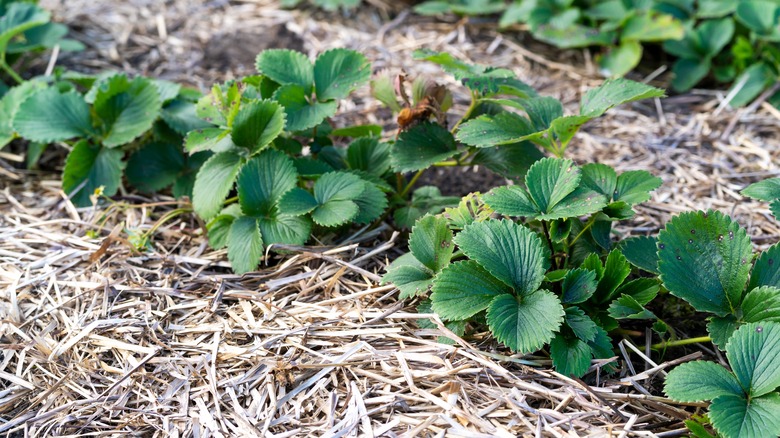Simple Tips For Preparing Your Strawberry Plants For Winter
As winter approaches, it's essential to prepare your strawberry plants to survive the chill and come back strong in spring. Strawberries are perennial, so they naturally enter a dormant state as temperatures drop and days get shorter. This dormancy is essential for the plant's survival through harsh conditions. However, while they're built to slow down for the winter, they still need your help to handle temperatures below 15°F, especially in areas prone to intense cold snaps.
To start the preparation, you'll want to make sure your strawberries are done producing fruit for the year. By the time late autumn arrives, you should have already pruned back blossoms in late summer. This helps the plant conserve energy and build strength for the next growing season.
Location is key in all seasons, including winter prep. Strawberries thrive in sunny spots, so any shaded or dimly lit areas should be avoided if you plan on placing your strawberries in containers during winter. Before your plants go fully dormant, enrich the soil around them. Adding used coffee grounds as a natural fertilizer may give them a boost as they head into winter dormancy. Coffee grounds provide a mild nitrogen source, which supports growth and is excellent for helping newly rooted strawberry plants. The grounds also improve soil structure and drainage, which can prevent root rot. In online gardening forums, coffee grounds have become a bit of a secret weapon for strawberry growers, with many attesting to better growth.
Protect strawberries with the right mulch for winter warmth
Once your strawberries have begun to go dormant, it's time for the final layer of winter defense: mulching. Strawberries need insulation from freezing temperatures, and while a layer of snow can provide natural protection, it's unpredictable. Instead, adding mulch, specifically straw, ensures your plants will stay cozy. Choose a dry, weed-free straw, which provides ample warmth without compacting or creating soggy conditions. When applying the straw, cover each plant with a thick layer—aim for about 3 to 6 inches deep, which will compress over time. This amount helps trap heat and insulate the plant crowns from frost.
Timing is also important for mulching. If you apply mulch at the wrong time you may end up trapping the cold air in the soil. Strawberries need several days of light frost to ease into their dormant phase, which helps them adjust to the cold. Wait until your plants have been through a few nights of freezing temperatures, usually in the high 20s to low 30s.
When choosing mulch, avoid the temptation to use fallen leaves or grass clippings, which can trap moisture and form solid, air-blocking mats. This can lead to crown rot as moisture accumulates under the mat, suffocating the plants.

